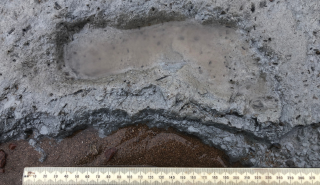Ancient Fish Traps Uncover Ancestral Activities Dating Back 7,000 Years
The discovery of Mesolithic fish traps in the Severn Estuary has shed light on the busy daily lives of hunter-gatherer communities that lived in Britain more than 7 millennia ago.
The traps comprise wood stakes woven around with withies to create a V-shaped fence in the bed of a former river channel. They were probably used to catch eels or other fish and date back 7,000 years, when hunter-gatherer-fisher communities lived before the arrival of farming.
The finds, made possible by excavations carried out by the University of Reading Archaeology’s Department, are set to be featured on BBC 2’s Digging for Britain tonight (Thursday, 4 January 2024).
Emeritus Professor Martin Bell, of the University of Reading, led the excavations at the Severn Estuary. He said: “The discovery is particularly important because, within the channel containing the fish traps, low tides have revealed hundreds of footprints of people, animals and birds.
“Stormy conditions in September and October 2023 revealed the best exposures of the footprints for many years. The dig team had to work quickly to record as much as possible during the period of low spring tides before they became covered by the sea and encroaching sand. These footprints provide unique insights into the composition of the community that lived here.
“Many footprints belonged to children, some as young as four, showing that they played an active part in the daily life of Mesolithic communities. In places, lines of footprints moving in both directions mark footpaths leading from campsites at the island edge to the channel where the traps were located. The footprints show how individual camps and activity areas are connected as parts of a living landscape.”
The research team also found abundant footprints of cranes, which were extinct in Britain until recently but have now been reintroduced and have bred in the area. Other animal footprints discovered include aurochs (an extinct wild cow) and boars.
This research is part of a University of Reading project, part-funded by the National Geographic Society, and is investigating the Mesolithic in two areas of Southern Britain: the Welsh Severn Estuary and the Kennet Valley in Berkshire.

